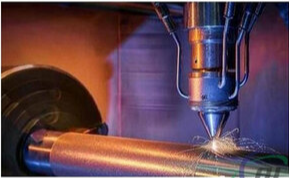

After the thermal spraying manufacturer replaced 8 traditional gray cast iron plates on the crankshaft of the internal combustion engine with a hot-melt cast iron-based coating, the porosity and mechanical properties of the aluminum castings in the cylinder bore area were very high.

The actual production process consists of four steps: fine boring, roughening, coating and post-processing. Between the above steps, testing must be done to ensure quality. Trials must be 100% based on part quantity, application and critical quality parameters. The purpose of fine boring is to align the hole with the crankshaft shaft and enlarge the hole after machining according to the thickness of the desired coating. At this point, shape and position tolerances need to be determined, and cylindricity generated. Regarding coating thickness, there are only very limited positional tolerances that can be corrected with thicknesses of a few hundred microns. Therefore, holes need to be set in place before roughening and coating
The purpose of roughening the cylindrical surface is to produce the desired coating adhesion. This step can be done by sandblasting corundum, high or pulsed low pressure fluid injection, or by pure machining. Coated surfaces for coking, separation equipment in corundum blasting and fluid jetting processes.
Mechanical roughening of the crankcase can usually be done after fine boring in the same fixture. Therefore, a rough outline can be introduced without offset. Secondly, the surface defects are detected and classified using optical image recognition technology for reprocessing. In the case of corundum blasting, such surface defects can be embedded in the corundum particles; in the case of fluid jets, it is mainly the exfoliated phase and expanded pores.
The thermal spray process is characterized by melting the coating material by a heat source, such as a plasma flame, and spraying the material by rotating the air stream. Liquid particles solidify suddenly on contact with surfaces and layers, forming a coating. Almost all materials can be processed by powder-based atmospheric thermal spraying. The spectrum ranges from thermoplastics, metals and carbides to ceramic layers. Iron-based coatings have the required tribological properties and can be used as wire or powder. Wire arc spraying, plasma transfer arc and rotating single wire are examples of wire coating processes.
In addition to metals, powder atmospheric plasma spraying also offers a choice of ceramic materials. Low alloy steel is mainly used for the coating of working surfaces of gas and diesel engines. The coating is not uniform and consists not only of molten and solidified particles. Inside the coating, oxides, carbides and voids accumulate at a frequency of 1% to 4%, depending on process parameters and process selection. These holes are used as lubricant registers after honing, and the lubricant is fixed in the designated position. As a result, the friction between the piston rings/pistons and the cylinder wall is small, which reduces fuel consumption and increases the service life of the engine.
The thickness of the untreated thermal spray coating must adhere to a narrow allowable range. Any deviation from specified tolerances may result in subsequent rework and destruction of the honing tool during subsequent machining
Hot information

